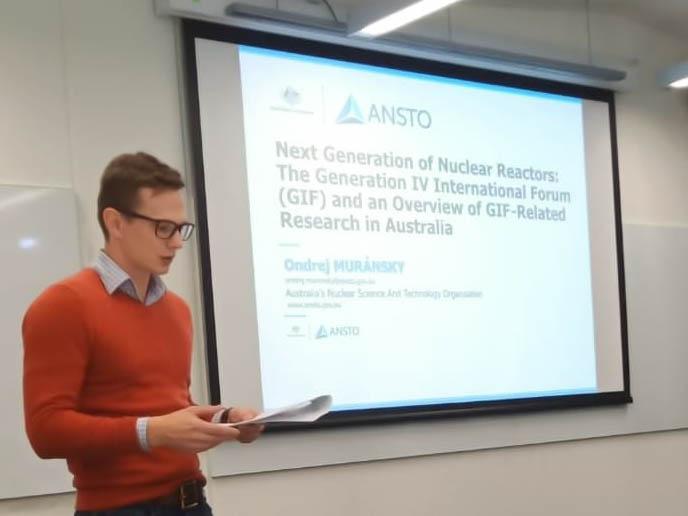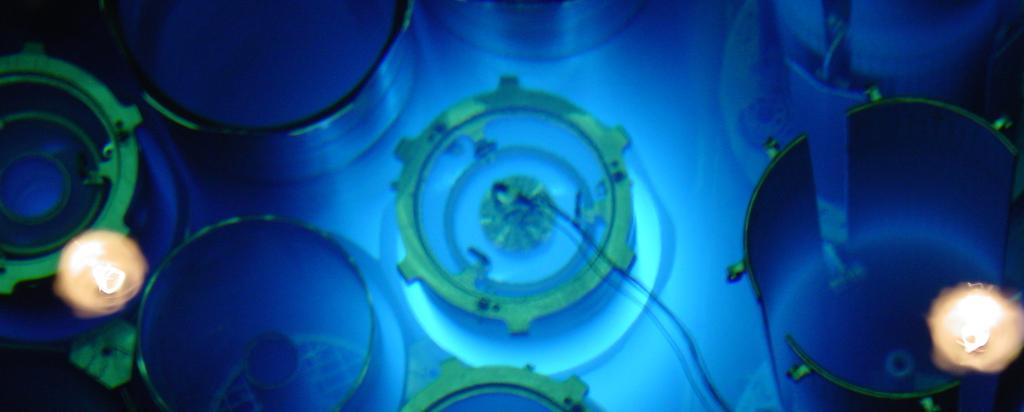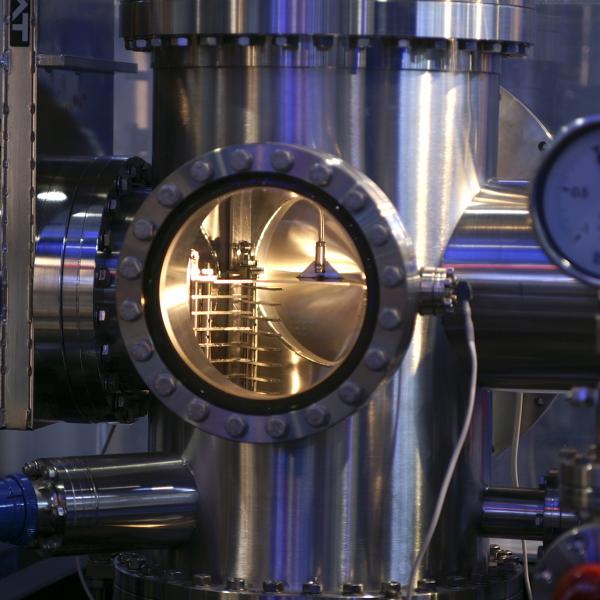

Published on the 11th June 2019 by ANSTO Staff
ANSTO scientists Dr Ondrej Muránsky (pictured below) and Prof Mihail Ionescu recently met with representatives of the University of New South Wales (UNSW) to discuss future opportunities for collaboration on Generation IV reactor systems.

For further information please contact theNuclear Fuel Cycleteam leader.
Work on the Very High Temperature Reactor (VHTR), and the Molten Salt Reactor (MSR) is part of Australia’s commitment to Generation IV International Forum (GIF).
ANSTO, as an implementing agent for GIF in Australia, is advocating for collaborative research on Generation IV reactor system by promoting opportunities for undergraduate students to gain practical research experience at the Lucas Heights campus in their final year.
For the past two years ANSTO, in collaboration with Professor Paul Monroe, Professor Jamie Kruzic of UNSW and Professor Julie Cairney of University of Sydney (USYD), has run an undergraduate program for students working on Generation IV -related research.
Students who are currently working or have already completed their research projects at ANSTO include Mia Maric (UNSW), Kevin Kan (UNSW), Alexander Danon (UNSW), Garen Douzian (UNSW), Nicolas Palmer (UNSW), Keshav Agarwal (USYD), and Shir-Ling Lim (USYD).
“This is an opportunity for students to gain expertise using ANSTO’s national landmark infrastructure, collaborate on a publication and have the work submitted as an Australia’s report to GIF,” said Ionescu.
“We value contribution that students can make to the research and we hope to build upon the success of this undergraduate program by bringing more Generation IV related research to Australian universities,” said Muránsky.
In the presentation by Muránsky, ANSTO shared information about Australian’s membership in Generation IV International Forum (GIF), presented examples of ANSTO-led Generation IV-related research in the field of material science and engineering, and showcased ANSTO’s national landmark infrastructure.
The main area of the research investigates performance of candidate materials for Generation IV reactors including metallic alloys, graphite, and ceramics.
“We focus on the effects of high temperature, corrosion and radiation damage on materials in service conditions,” said Muránsky, who has expertise on the performance of materials in extreme environments.
“Students have the opportunity to participate in Generation IV related research projects focused on degradation of materials in future reactor systems,” said Ionescu.
ANSTO researchers published a number of manuscripts reporting on the effect of molten salt corrosion on different alloys, which were identified as candidate structural material for MSR systems.
These alloys are also of interest for concentrated solar thermal (CST) and energy-storage systems, which use molten salt as a heat transfer and heat storage medium.
A recent publication by student Mia Maric et al examined the effect of cold rolling on molten salt corrosion of stainless steel, which is being considered for future energy-generation and energy-storage systems. Read more.
An investigation using the Imaging and Medical Beamline at the Australian Synchrotron examined the infiltration of molten salt into graphite, which is of importance for optimal performance of proposed MSR systems.
ANSTO researchers have published numerous research papers outlining the effect of radiation damage on mechanical properties of various Generation IV–related materials, which is of importance in estimating the lifetime of a reactor in service.
For further information please contact theNuclear Fuel Cycleteam leader.
